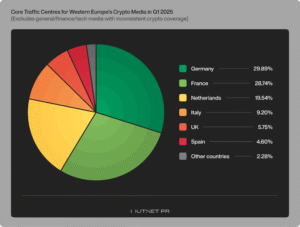The evolution of the internet has transformed the way creative industries operate. The emergence of Web 3.0 is poised to take the creative industry to a whole new level. Web 3 is a concept that envisions a future where the internet is more intelligent, connected, and decentralized. In this article, we will explore the impact of Web 3.0 on creative industries and how it will shape the future of creativity.
What is Web 3.0?
Web 3.0 is the next phase of the internet’s evolution, also known as the decentralized web. It is an internet that is more intelligent, connected, and decentralized than the current Web 2.0. Web 3 will be built on top of blockchain technology and will enable decentralized applications (dApps) to operate without relying on centralized servers. This means that users will have more control over their data and will be able to interact with decentralized applications in a trustless and transparent manner.
The Impact of Web 3.0 on Creative Industries
Web 3.0 is expected to have a significant impact on the creative industry. The decentralized nature of Web 3 will democratize the creative industry, making it more accessible to everyone. Here are some of the ways that Web 3 will impact the creative industry:
1. Ownership and Copyright
Web 3.0 will enable artists and creators to establish ownership and copyright of their work without relying on centralized intermediaries. This means that creators will be able to control their creations and earn a fair share of the revenue generated from their work. This will also prevent piracy and plagiarism, as every creation will be linked to its original creator.
2. Decentralized Funding
Web 3 will enable creators to receive funding from their audience directly. Creators can use decentralized crowdfunding platforms to raise funds for their projects without relying on centralized intermediaries. This will enable creators to have more control over their projects and ensure that their vision is realized.
3. Digital Collectibles
Web 3 will enable the creation of digital collectibles that can be owned and traded like physical collectibles. Digital collectibles will be unique, non-fungible tokens (NFTs) that represent a specific asset or creation. This will enable creators to monetize their work in new and innovative ways and provide a new revenue stream for the creative industry.
4. Smart Contracts
Web 3.0 will enable the use of smart contracts in the creative industry. Smart contracts are self-executing contracts that are stored on the blockchain. They can be used to automate the payment process for creators, ensuring that they receive payment as soon as their work is used. This will eliminate the need for intermediaries and reduce transaction costs.
5. Virtual Reality
Web 3 will enable the creation of immersive virtual reality experiences. This will enable creators to provide a new level of engagement for their audience and create new revenue streams. Virtual reality experiences can be monetized through the sale of virtual real estate, digital assets, and experiences.
The Challenges of Web 3.0 Adoption

The adoption of Web 3 faces several challenges. They are:
1. User Experience
- The decentralized nature of Web 3 can make it more difficult for users to navigate and understand. This can lead to confusion and frustration, which can hinder adoption.
- The decentralized web requires users to manage their own private keys, which can be challenging for non-technical users.
- The user experience of Web 3 is still in its early stages of development, and there is a lack of user-friendly applications that can make it easier for users to interact with the decentralized web.
2. Regulatory Landscape
- The regulatory landscape for Web 3 is still developing, and there is uncertainty around how it will be regulated. This can create a sense of uncertainty for businesses and individuals looking to adopt Web 3 technologies.
- Different countries and jurisdictions may have different regulations regarding Web 3.0, which can create a fragmented regulatory landscape that hinders adoption.
- There is a need for clear and consistent regulations that can provide certainty for businesses and individuals looking to adopt Web 3 technologies.
3. Scalability
- Web 3.0 relies on blockchain technology, which can be slow and expensive. This can hinder adoption, as users may experience slow transaction times and high fees.
- Scaling blockchain technology to handle the needs of Web 3 will be a significant challenge. Current blockchain technology has limited scalability, which can limit the adoption of Web 3.
- New scaling solutions, such as layer-two solutions or sharding, are needed to enable blockchain technology to handle the needs of Web 3.
The Role of Blockchain in Web 3.0
Blockchain technology is a critical component of Web 3.0. Blockchain provides a secure and decentralized way to store data and execute transactions. It enables creators to establish ownership and copyright of their work, as well as receive payment directly from their audience without relying on intermediaries.
Blockchain technology is also used to create unique digital assets that can be owned and traded like physical assets. These digital assets can take many forms, such as digital collectibles, virtual real estate, and even virtual worlds.
The use of blockchain technology in Web 3 also enables creators to protect their work from piracy and plagiarism. Every creation is linked to its original creator, ensuring that they receive credit and compensation for their work.
The Impact of Web 3.0 on Intellectual Property
Web 3.0 is expected to have a significant impact on intellectual property rights. The decentralized nature of Web 3 enables creators to establish ownership and copyright of their work without relying on centralized intermediaries.
Blockchain technology enables creators to create unique digital assets that can be owned and traded like physical assets. Digital assets can include anything from digital art to music to virtual real estate. These assets can be sold on decentralized marketplaces, providing creators with a new revenue stream.
The use of smart contracts also enables creators to protect their intellectual property rights. Smart contracts can be used to establish ownership and copyright of creations, as well as automate the payment process for the use of those creations.
Virtual Reality in Web 3.0
Virtual reality (VR) is a rapidly evolving technology that is poised to play a significant role in Web 3.0. VR enables creators to provide immersive experiences that can engage their audience on a whole new level.
In Web 3, virtual reality experiences can be monetized through the sale of virtual real estate, digital assets, and experiences. Virtual reality can also be used to create digital twins of physical environments, enabling creators to provide a new level of engagement for their audience.
The use of virtual reality in Web 3 also has implications beyond the creative industry. It can be used in industries such as education, healthcare, and retail to provide immersive experiences that can improve outcomes and efficiency.
The Future of Web 3.0 and Creative Collaboration
Web 3.0 has the potential to transform the way that creators collaborate and work together. The decentralized nature of Web 3 enables creators to work together without relying on centralized intermediaries.
Decentralized collaboration tools, such as decentralized file storage and communication platforms, enable creators to work together in a trustless and transparent manner. Smart contracts can be used to automate the payment process for collaborators, ensuring that they receive payment as soon as their work is used.
The future of Web 3.0 and creative collaboration is exciting and full of possibilities. The decentralized nature of Web 3 enables creators to collaborate in new and innovative ways, and the use of blockchain technology ensures that creators receive credit and compensation for their work.
Conclusion
Web 3.0 is the next phase of the internet’s evolution, and it will have a significant impact on the creative industry. The decentralized nature of Web 3.0 will democratize the creative industry, making it more accessible to everyone. Web 3 will enable creators to have more control over their work and monetize it in new and innovative ways. We are on the cusp of a new era of creativity, and the future is full of possibilities.
FAQs
- What is Web 3.0?
Web 3.0 is the next phase of the internet’s evolution, also known as the decentralized web. It is an internet that is more intelligent, connected, and decentralized than the current Web 2.0.
- How will Web 3.0 impact the creative industry?
Web 3.0 will enable creators to have more control over their work and monetize it in new and innovative ways. The decentralized nature of Web 3.0 will democratize the creative industry, making it more accessible to everyone.
- What are digital collectibles?
Digital collectibles are unique, non-fungible tokens (NFTs) that represent a specific asset or creation. They can be owned and traded like physical collectibles.
- What are smart contracts?
Smart contracts are self-executing contracts that are stored on the blockchain. They can be used to automate the payment process for creators, ensuring that they receive payment as soon as their work is used.
- What are digital twins?
Digital twins are digital replicas of physical objects or environments. They can be used to create immersive experiences and enable creators to provide a new level of engagement for their audience.






